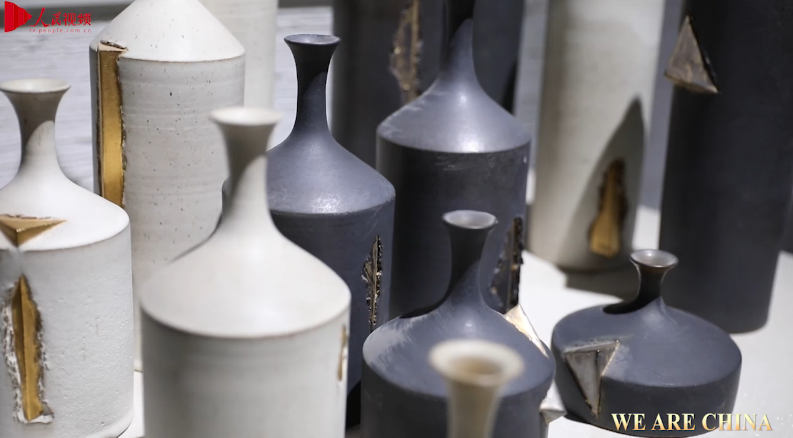

Dehua is known as a porcelain hub in China, with some 2,600 ceramics companies currently working in the area, bringing the small county to the world stage in porcelain production.
Dehua porcelain has been around since as far back as the Chang to Tang Dynasties, and began to thrive in the Song Dynasty (960-1279) when this white-glazed china was first exported to Europe and Africa. Thanks to its favor in France, it's quite aptly known as Blanc de Chine in much of the western world, simply meaning "White from China".

In the last few decades, the industry has continued to develop. In 2017, the output value of the ceram-ics industry in the region reached $3.58 billion thanks to massive exports as well as refined artisans.
Su Xianzhong is one such artist, a master of the craft. He comes from a long line of respected Dehua sculptors and is the fourth generation owner of the famed Yun Yu Porcelain Studio, which was established by his great grandfather Su Xuejin.
"He participated in the 1915 Panama-Pacific International Exposition (held in San Francisco), winning a gold medal with his porcelain plum blossom", Su explained.
After China's reform and opening up, Su's company was the first in the area to become a privately run, joint-stock enterprise. Su then began to focus on expressing his modern concepts through porce-lain, bringing Dehua forward as a contemporary art form.
"In my father's generation, the porcelain industry in Dehua began to include modern elements, includ-ing the portrayal of flowers. Today, in my generation, we go abroad to exhibit our products, to use different languages to introduce this white porcelain."
In keeping with the family tradition, Su has been awarded various gold and silver medals in national competitions, and his work sits in museums in Asia and Europe.
"Dehua County must have universal languages if it wants to promote its overseas engagement," he noted, adding that his art is one such language. His modern style, basing sculpture on everyday items, including paper and fabric, bridges the gap between the traditional industry and modern design.
While Su's craft is at one end of the spectrum, a large number of the porcelain produced in this area is still exported, and for that to be the case, it must also be provided on a massive scale.
Zheng Pengfei is the general manager of Shunmei Group, a porcelain manufacturer and exporter which still uses traditional methods to collect and produce porcelain.
The company exports to over 100 countries and their products line the shelves in global stores includ-ing Disney, Walmart and Target. For Zheng, it means more business opportunities both at home and abroad.
"Now our company has about 1,500 employees," Zheng explains, noting that since their town was linked to the expressway, more foreign brands have become interested in their products.
Although we are all aware of "Made in China", seeing it on such a massive scale is startling. Employ-ees sit with a seemingly endless number of cups ahead of them to paint, already hard at work to pro-duce Halloween and Christmas stock ready to sit on the shelves of supermarkets like Tesco later this year.
Whether through modern art or mass production, Dehua is still a global name all these hundreds of years later. Although the two companies are in stark contrast to one another, both are, in their own way, still bringing Dehua porcelain to the modern world.

 Award-winning photos show poverty reduction achievements in NE China's Jilin province
Award-winning photos show poverty reduction achievements in NE China's Jilin province People dance to greet advent of New Year in Ameiqituo Town, Guizhou
People dance to greet advent of New Year in Ameiqituo Town, Guizhou Fire brigade in Shanghai holds group wedding
Fire brigade in Shanghai holds group wedding Tourists enjoy ice sculptures in Datan Town, north China
Tourists enjoy ice sculptures in Datan Town, north China Sunset scenery of Dayan Pagoda in Xi'an
Sunset scenery of Dayan Pagoda in Xi'an Tourists have fun at scenic spot in Nanlong Town, NW China
Tourists have fun at scenic spot in Nanlong Town, NW China Harbin attracts tourists by making best use of ice in winter
Harbin attracts tourists by making best use of ice in winter In pics: FIS Alpine Ski Women's World Cup Slalom
In pics: FIS Alpine Ski Women's World Cup Slalom Black-necked cranes rest at reservoir in Lhunzhub County, Lhasa
Black-necked cranes rest at reservoir in Lhunzhub County, Lhasa China's FAST telescope will be available to foreign scientists in April
China's FAST telescope will be available to foreign scientists in April